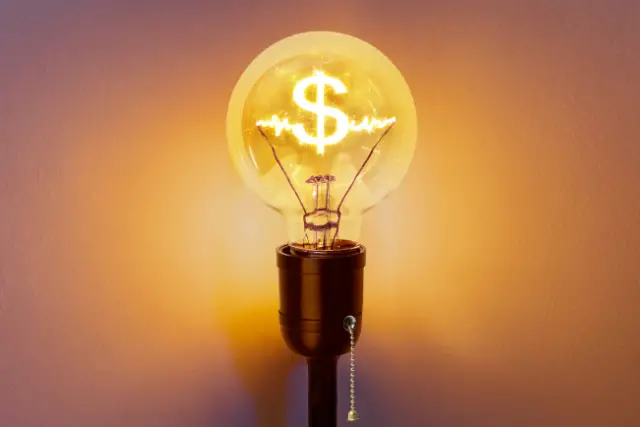It’s not what you know, it’s what you do with what you know that counts. This is one of the many valuable lessons from Rich Dad Poor Dad, a book by Robert Kiyosaki.
The book helped change my family’s life and taught us how to find success in life.
In this blog post, I’m excited to share 9 of the most important lessons from the book.
If you apply these lessons to your own life, you will see a dramatic improvement in your finances and overall happiness!
This post may contain affiliate links; please see our disclaimer for details.

Table of Contents
Book Summary, Rich Dad Poor Dad – Robert Kiyosaki
Rich Dad Poor Dad is a book about two fathers, one rich and one poor.
The author, Robert Kiyosaki, was raised by his poor father and his rich friend’s father.
Through these two men, he learned the difference between having money and being wealthy.
He also learned that it is not what you know, but what you do with what you know that counts.
The book is full of valuable lessons, but here are 9 of the most important ones:
Lesson #1 – The rich do not work for money
The poor and middle-class work for money. They trade their time for money.
The rich, on the other hand, work to learn how to make money work for them. They don’t exchange their time for money; they invest their time.
The rich know that it’s not about how much money you make, but about how much money you keep.
The middle class is focused on their salary or hourly wage, while the rich focus on creating systems that generate cash flow.
Lesson #2 – The rich are not afraid of failure
Rich people view failure as a learning opportunity. The poor and middle-class see failure as an endpoint, something to be avoided at all costs.
The rich know that failing is part of the journey to success.
They view each failed attempt as a step closer to their ultimate goal.
Lesson #3 – The rich think differently about money
The poor and middle class see money as something to be spent, while the rich see it as something to be invested in.
The rich know that they can use the money to make more money. They understand the power of compound interest and leverage.
The rich also know that they cannot save their way to riches. Savings are important but only a small part of the equation.
The real key to wealth is generating income through investments.
A great way to start investing in real estate without a lot of money is with Fundrise, a crowdsourcing real estate investing platform.
With investment minimums of ONLY $10, you can start making PASSIVE INCOME with your real estate investment portfolio!
Lesson #4 – The rich have multiple streams of income
The poor and middle class typically have one source of income: their job.
The rich have multiple income sources, giving them more security and options. This can be anything from investments to rental properties to businesses.
The rich know they need to diversify their income sources to protect themselves from financial risk.
For example, if your only income source was from a job, what would happen if you were laid off?
Having multiple income streams gives you a safety net to fall back on.
Diversifying your income streams is a key part of financial security. It’s important to have multiple sources of income so that you are not reliant on any one source.
It can also help with creating a surplus of money that can be used for reinvestments.
Lesson #5 – The More You Learn, The More You Earn

The rich know that they need to continuously learn and grow. They understand that the world is constantly changing and that they need to change with it.
The poor and middle-class tend to stay stuck in their ways, refusing to adapt to new information or technologies.
The rich also know that they cannot do everything on their own. They surround themselves with experts who can help them achieve their goals. They are not afraid to ask for help or pay for advice.
Lesson #6 – Savers Are Losers
This was probably the most controversial lesson in the book, and it goes against pretty much everything we’ve been taught our whole lives.
The message is that if you want to get ahead financially, you need to invest your money rather than save it.
The reasoning behind this is that savings accounts earn very little interest, so your money isn’t really growing.
On the other hand, if you invest in something like stocks or real estate, your money has the potential to grow much more quickly.
Of course, there is risk involved with investing, but that’s why Kiyosaki recommends starting small and learning as you go.
He also stresses the importance of diversifying your investments so that you’re not putting all your eggs in one basket.
Inflation is also something to consider when it comes to saving vs. investing.
If you have your money in a savings account, the rate of inflation will eat away at your purchasing power over time.
On the other hand, if you’re investing in assets like stocks or real estate, your investment will likely go up in value as inflation goes up.
Lesson #7 – Your House Is Not An Asset
Another interesting lesson goes against everything we’ve been taught our whole lives. We’re told our house is our biggest asset, but Kiyosaki says that’s not true.
Instead, he classifies your house as a liability. That’s because you have to pay for upkeep, property taxes, insurance, and other expenses.
And unless you’re renting out part of your house, you’re not generating any income from it.
On the other hand, an asset generates income for you. For example, a rental property or a business.
So while your house may be worth a lot of money on paper, it’s not doing anything for you financially.
Learning how the same item, property or otherwise, can be viewed as an asset or a liability was huge for me.
It completely changed how I looked at my house and other possessions.
For more on this topic, you can check out this other article I wrote on How to Know if your House is an Asset or a Liability.
Lesson #8 – Calculated Risks
The rich know that they need to take risks if they want to achieve financial success.
They are not afraid of failure and understand that setbacks are part of the journey.
The poor and middle class tend to play it safe, which often keeps them from achieving their full potential.
The rich also know that not all risks are created equal. They carefully calculate the risks they take and only put their money in ventures that potentially give them a high return.
They are patient and disciplined when it comes to taking risks.
Lesson #9 – Bad Debt vs. Good Debt
The rich know the difference between good debt and bad debt.
Good debt will increase in value over time or generate income for you.
An example of good debt would be a rental property or a business loan. Bad debt is something that doesn’t offer any financial benefits.
An example of bad debt is a credit card balance that doesn’t get paid off on time.
Related Content: Dave Ramsey 7 Baby Steps | Do They Actually Work?
Conclusion: Lessons from Rich Dad Poor Dad
These are just a few lessons I’ve learned from Rich Dad Poor Dad.
The book has completely changed how I think about money, and it’s helped me take control of my financial future for myself and my family.
If you want to improve your financial situation, I highly recommend reading it.
I’m so grateful that I came across this book, and I’m excited to see where my new financial knowledge takes me.
The book’s final lesson is that he explains the importance of continually improving your IQ.
By reading other articles on this website, you can improve your financial intelligence.
Disclaimer:
We hope the information in this article provides valuable insights to every reader but we, the Biesingers, are not financial advisors. When making your personal finance decisions, research multiple sources and/or receive advice from a licensed professional. As always, we wish you the best in your pursuit of financial independence!

